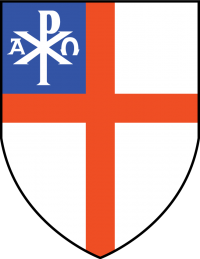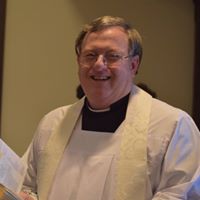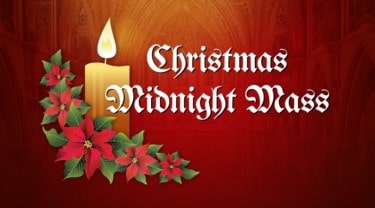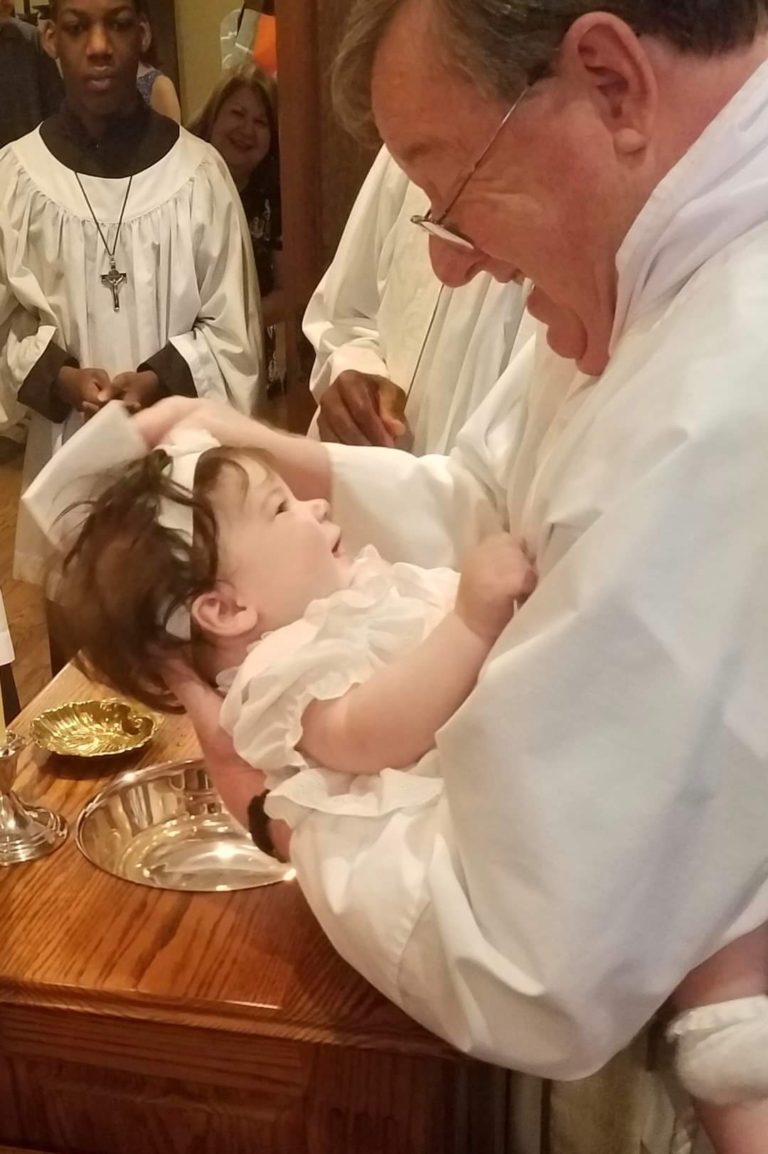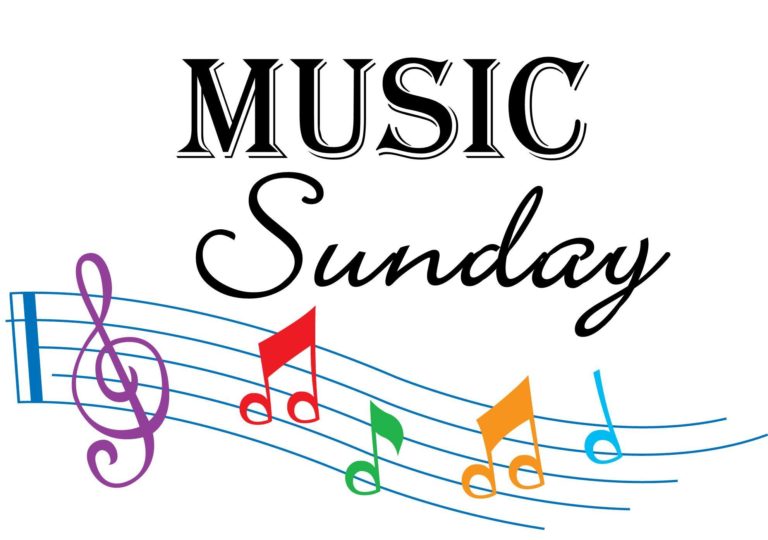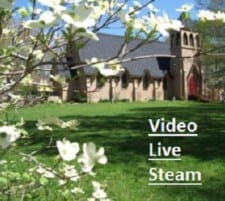Cambridge Andrewes and English Catholics’ Response to Cranmer’s Prayer Books of 1549 And 1552
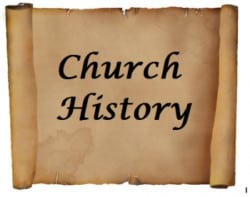
At the beginning of the sixteenth century the principal worship throughout
England was the Mass, of which the Sarum Rite was the most widely used. The focal
point was the elevation of the Host, not the act of Communion. The laity rarely
communicated other than at Easter, and so they poured out their devotion to their Lord
when the Host was raised. When the first Prayer Book of 1549 was compiled under the chairmanship of Cranmer, the service of the Mass followed more or less this Sarum rite.
The main difference between the old Sarum and the 1549 was the addition of The Order
of Communion, to be said just before Communion.1
This had first been published in 1548
and was to be said in the vernacular.
The rubrics directed the priest to celebrate in English ‘afore the middle of the
Altar’ still in its ancient eastern position, to prepare the elements at the offertory, to take
the unleavened bread and chalice in his hands and to make the twofold signs of the cross
at the epiclesis. However there was no elevation and the congregation was encouraged to
communicate. Rubrics also directed the priest to wear alb and vestment or cope and for
any assisting ministers to wear albs and tunicle. The rubrics also indicated a daily
celebration. The eucharistic doctrine was a belief in the real presence of our Lord, that is,
the substances of bread and wine become His blessed Body and Blood respectively.
However the 2nd Prayer Book of 1552 brought radical changes to the structure of
the Mass now referred to as the Lord’s Supper or Holy Communion. No longer was the
celebration to be offered at the altar but at a table placed either ‘in the body of the
churche or in the chauncell’ with the priest standing at its northern end. In its radical
departure from the 1549 Mass, the 1552 Holy Communion service destroyed any concept
of real presence, of celebrating and offering the sacrifice of Christ for the living and the
dead, and of sanctifying the elements by omitting words such as celebrate, bless and
sanctify. Instead the emphasis was on memory, to recall in narrative the death of Christ. It
was, as Cuming stated, ‘uncompromisingly Protestant’. Thus priest and people gathered
not ‘to celebrate the commemoration of the most glorious death of thy sonne’ but ‘to
continue a perpetuall memorie of that his precious death, untill his cominge againe.’ The
priest does not invoke the Holy Spirit to ‘blesse and sanctifie these thy giftes, and
creatures of bread and wine, that they maye be unto us the bodie and bloude of thy moste
derely beloved sonne Jesus Christe’, but instead he prays to the Father ‘that wee,
receiving these thy creatures of bread and wine, accordinge to thy sonne our Savioure
Jesus Christ’s holy institution, in remembraunce of his death and passion, maye be
partakers of his most blessed body and bloud.’ Thus the emphasis in 1552 was placed on
the people participating rather than the elements becoming the Body and Blood of Christ.
1
This consists of an exhortation to repent, the general confession, absolution, comfortable words and the
‘prayer of humble acess’ which was retained in the 1552, 1559, 1604 and 1662 liturgies but before the
prayers of consecration. E.C..S..Gibson (ed.), The First and Second Prayer Books of Edwards VI
(Everyman’s Library, London, 1957), pp. 224 – 5.
2
The 1552 service also removed the concept of union in Christ. The communicant was no
longer assured ‘that whosoever shalbee partakers of this holy Communion, maye
worthely receive the most precious body and bloude of thy sonne Jesus Christe … that he
maye dwell in them, and they in him.’ Instead he heard ‘that al we which be partakers of
this holy Communion, maye bee fulfilled with thy grace and heavenly benediction’ after
he has communicated rather than before. Similarly in the prayer of thanksgiving ‘to feede
us in these holy Mysteries’ was replaced by ‘to fede us, whiche have duely received these
holy mysteries.’ In the 1552 service when the sacrament was received the bread and wine
are signs or represent the body and blood of Christ as compared with the belief in the real
presence of Christ in the Sacrament. To adore the Sacrament was an act of idolatry,
whilst ordinary bread replaced the unleavened hosts. Its lowest ebb of Protestantism was
seen in the rubric at the end of the service- ‘And yf any of the bread or wine remayne, the
Curate shal haue it to hys owne use.’2
The Liturgy adopted in 1559 was the 1552 one with two significant changes. The
first concerned the words at the act of communion which combined both the 1549 and
1552 in that order. This meant that the communicant first heard ‘The bodie of our Lorde
Jesus Christe whiche was geuen for thee, preserve thy bodye and soule unto everlasting
life’, and similar words for ‘the bloude’ before ‘take and eat this in remembrance of
me…’ and ‘drink this.’3
The second was the omission of the Black Rubric, which had
expressed an explicit denial of the corporal presence of Christ in the Sacrament. These
changes were important for Andrewes and English Catholics as it allowed them to
proclaim that their belief in the real presence of Christ was in accordance with the Prayer
Book. It was the 1559 liturgy and later the 1604 that Andrewes and Reformed Catholics
were legally bound to use, but they found ways around this, principally by altering the
order of the liturgy.
In the early seventeenth century Andrewes was considered the authority on
worship by many of his contemporaries, and so what he practised in his episcopalian
chapel became the standard for the celebration of the Liturgy or how they would have
liked to, by English Catholics.
To appreciate Andrewes’ preference for the traditional Mass structure one has to
visualise his chapel. The focal point was the altar, raised on a foot-board and adorned
with its lavish frontal against the eastern wall where it had been in the ancient and
mediæval churches. It was railed off from the rest of the chancel to denote it was sanctum
Sanctorum. These rails served another purpose as Andrewes insisted that communicants
kneel before the altar to receive the Sacrament. On the altar were ‘two candlesticks with
tapers, basin for the oblation, and a cushion of violet and crimson damask which matched
the altar frontal, for the service book.’ When the Eucharist was celebrated a chalice, paten
and tricanale for mixing the wine with the water were also placed upon it, whilst on the
credence table were the ‘silver and gilt canister for the wafers like a wicker-basket and
lined with cambric laced’, a small barrel for the communion wine, ‘a basin and ewer’ and
towel for the ablutions. On an additional small table in the sanctuary was placed a
‘navicula’ (i.e. boat shaped vessel) from ‘which frankincense is poured’ into ‘a triquestral
2
Ibid., pp.222-3, 227, 389-90; G. J. Cuming, A History of Anglican Liturgy, 2nd ed (London, 1988), pp. 78-
9.
3
Gibson, op. cit., pp. 225, 389, 393.
3
censer’ for censing at the appropriate places in the Liturgy. This censer hung in the
chancel behind the lectern during the services to symbolise the offering of worship to
God. In the centre of the chancel on a pedestal was the lectern with its great bible, and in
front of it was a faldstool, that is, a small desk for praying the Litany. There were also
seats for the bishop (his seat was canopied), the chaplain, for ordinands and two long
benches for the family. On the eastern wall above the altar there was ‘a … hanging
depicting the story of Abraham and Melchizedek’, emphasising no doubt both the
blessing and sacrificial ministeries of the latter. The pulpit also was richly covered with a
matching cloth of crimson and violet damask.’4
The altar plate used by Andrewes was also significant. He deliberately departed
from the Reformers’ use of a communion cup, and instead used a Gothic style chalice and
paten on which were engraved icons, especially popular in the early Church, the Good
Shepherd on the chalice and the star of Bethlehem on the paten-cover. In his 1620
Nativity sermon Andrewes explained that ‘In the old Ritual of the Church’ this ‘wise
men’s star’ was engraved ‘on the cover of the canister, wherein was the Sacrament of his
body’ ‘to show that now the star leads us thither, to His body there.’5
Thus it was in this beautiful chapel, designed for Catholic worship that Andrewes
celebrated the Liturgy. Steeped in the teachings of the Fathers and the liturgies of both
Eastern and Western churches it meant that in intention and form he followed more
closely the 1549 Prayer Book rather than the 1552. From his notes on the Prayer Book,
and those of Cosin’s who incorporated both Andrewes and Bishop Overall’s notes into
his own, it is possible to describe how the Liturgy was celebrated by Andrewes and
English Catholics in the early seventeenth century.
The omission of rubrics in the 1552 Prayer Book to give directions on how to
celebrate the Liturgy, enabled Andrewes to devise his own ceremonies in order to give
shape to the Liturgy, and by so doing he turned the 1552 Liturgy from being ‘a series of
Communion devotions’ into what the Liturgy had always been, that is, to celebrate the
passion and death of Christ, to offer up His sacrifice for the living and the dead, and the
communicants’ union with Christ by receiving His Body and Blood.6
The first ceremony was at the offertory where he made a clear distinction between
the offering of the bread and wine and the almsgiving.7
The bishop or celebrant ascended
the altar steps with treble adorations and knelt at the altar. Meanwhile the priest took the
basin from the back of the altar and placed it at the front. Next he brought the canister
and wine-barrel to the bishop who offered them on behalf of the congregation and placed
them on the altar. The bishop then put his own alms in the basin, after which he went to
the entrance to the chancel to read the offertory sentences, which were of Andrewes’
4
L. Andrewes, The Works of Lancelot Andrewes, eds.. J. Bliss & J. P. Wilson, 11 vols (Oxford 1841-54),
Vol. 11, pp. xcvii-xcix, .
5
Ibid., Vol. 1, pp. 235, 247.
6
Ibid., Vol. 11, p. 20; A. H. Couratin, The Service of Holy Communion 1552 – 1662, Church Quarterly
Review, Vol. 163, pp. 431 – 442 (1962), pp. 43 –40.
7
From visitation articles we know these elements always had to be of the best quality as illustrated by this
enquiry in Cosin’s visitation articles of 1627. Does the priest ‘carefully see to the preparation of the Bread
and Wine before every communion, that they be pure and wholesome? J. Cosin, The Correspondence of
John Cosin, D.D. Lord Bishop of Durham, ed., G. Ornsby , 2 vols (Surtees Society, vols. 53 & 55, Durham
1868,1870), Vol. 2, p.118.
4
devising. The congregation then came forward and placed their offerings in the ‘bason’
before going to their appropriate places to kneel whilst only bishops and priests remain
‘within the Septum’, and the ‘Deacon at the door’. When this offering was made,
Andrewes insisted that the congregation ‘should not pay it to the Curate alone, but to God
upon the altar; from whence the Curate had his warrant to take it, as deputed by Him, and
the Apostles plainly allude.’ The preparation of the elements came just before the prayer
of consecration when sufficient wafers (Andrewes always used unleavened bread and not
leavened as directed by the 1552 rubrics) and wine mingled with water (not included in
1552) was poured into the chalice.8
The preparation had been preceded by the lavabo,
and not afterwards as was the traditional position. “The priest after adoration pours water
upon the napkin and cleanses his hands”, saying as he does the traditional words from
psalm twenty-six, verse six, “Lavabo in innocentia manus, meas, et sic introibo ad altare
Dei, ut annunciem vocem”. Thus the ablutions cleansed the hands in order to touch as
well as consecrate the elements, whilst the water and wine mingled in the cup of
Salvation symbolised the cleansing from sin, and “our consciences from dead works, to
serve the living God.” Andrewes always observed these practices, even during a service
for consecrating churches.9
During the Canon Andrewes restored the appropriate manual acts during the
prayer of consecration. This was followed by the faction, and communion. He insisted
that priest and people should kneel to receive the Sacrament. In the post 1549 liturgies the
celebrant was left standing at this point. Andrewes encouraged the laity to say Amen after
the words “the Body (Blood) of our Lord Jesus Christ which was given for thee … .”
Andrewes made clear that this had been the custom in the early Church when the people
took the Sacrament “from the priest in their hands, … [said] Amen.” From this “we gather
the priest did not deliver the Sacrament to any to ‘Take and eat’ before the communicants
had professed their faith of Christ’s Body to be exhibited unto them.”10
As well as devising his distinctive ceremonies Andrewes and English Catholics
had their own personal preferences for how the Liturgy should be celebrated. Three
factors determined this: beauty, reverence and ancient practice. After the introit the three
ministers, the celebrant, epistoler and gospeller (Andrewes kept the old names),
approached the altar with three adorations and if there were only two ministers
officiating, they went to each end of the altar, representing as it were “the two Cherubims
8
This custom was as old as St. Cyprian’s time and was included in the Acts of Thomas. It symbolised the
mingling of Christ’s blood and water flowing from His wounded side. Cosin, commenting on the mingling
of water with the wine suggested it was probably Christ’s practice at the institution of the Sacrament, ‘for it
is not so likely, that He used wine alone in His sacred Supper, both because it was the custom of the Jews,
diluere vinum, … and because all the evangelists uses of calix, quod nomen (says Maldonate) significat
vinum conjunctum cum aqua, juxtaritum. The ancient liturgies are all for vinum cum aqua mixtum. J. Cosin,
The Works When this offering was made, Andrewes insisted that the congregation “should not pay it to the
Curate alone, but to God upon the altar; from whence the Curate had his warrant to take it, as deputed by
Him, and the Apostles plainly allude.” The preparation of the elements came just before the prayer of
consecration when sufficient wafers (Andrewes always used unleavened bread and not leavened as directed
by the 1552 rubrics) and wine mingled with water (not included in 1552) was poured into the chalice. J.
Cosin, The Works of the Rt Reverend Father In God John Cosin, Lord Bishop of Durham, ed. J. Sanson,,, 5
vols (Oxford, 1843 – 55), Vol. 5, pp. 153-4.
9
Ibid., pp.97, 105-6; Andrewes, op. cit., Vol. 3, p. 359, Vol 11, pp. 31, 153-7; R. M. Woolley, The Bread of
the Eucharist, Alcuin Club Tracts, Vol. 10 (London, 1913), p. 8. 10 Cosin, op. cit., Vol. 5, p. 112.
5
at the mercy-seat”. At the altar the celebrant said or sang the opening collect after which
he “descends to the door of the septum” [i.e. the screen entrance], Here he bows to the
altar before he turns to the people to read the Ten Commandments. Why did Andrewes
use this Reformed text of the Kyries and depart from the ancient rite? The answer is
probably associated with his disapproval of so much contemporary behaviour, and so he
felt his congregation should hear this moral code. The celebrant returns to the altar and
kneels to say “the collect of the day.” The epistoler and gospeller before going to the door
to read the epistle and gospel respectively bow to the altar. Before the Gospel the
congregation said or the choir sang the response, “Glory be to Thee, O Lord”, and which
had been omitted from the 1552 service. When the name of Jesus was mentioned in the
Gospel reading, the clergy, choir and supposedly all members of the congregation
acknowledged His sacred name by “bowing the knee”. Both Andrewes and Cosin made it
clear that it is only when the holy Gospel is read that “adoration [is] made at the name of
Jesus; for then only is it in right exaltation [when] … men stand in a posture ready to
make reverence.”11
After the Gospel Andrewes inserted the most ancient of all propers, the Gradual.
Cosin commented that in having the Gospel follow immediately after the Epistle reading
rather than having “tracts and graduals between them” as in the Roman Missal, makes us
“nearer to antiquity”.12 The Creed followed, either said or sung; if the latter the choir and
the organ were often accompanied by musical instruments.13 Then came the hour-long
sermon,14 which was based on the readings or collect for the day, followed by the notices
announcing holy and fast days for the coming week.
Following the offertory came the prayer for ‘Christes Church’, a ‘most ancient
and apostolic prayer’ having been used by Clement. This was taken by the deacon as it
had in the ancient Church. He ‘prays for the whole church, and all the world, and the
parts of it, for the priests and rulers, for the king, and for the general peace.’ Commenting
on the addition ‘militant here on earth’ Overall claimed that these were added to exclude
those prayers ‘in the ancient liturgies’ which remembered ‘the deceased Saintes (i.e.
Patriarchs, Prophets, Apostles and Martyrs’ etc. which were mentioned in the 1549
liturgy). On the omission of praying for the dead, Cosin remarked that ‘the Puritans
(craftily) doe not object to this defect in our Liturgy, for fear it should bee againe put
in.’15 I am not sure whether Andrewes prayed for the dead publicly. He certainly did in
his private devotions, and in his response to Cardinal Perron he declared that the Mass is
offered for the living, the dead and the unborn.16
11 Ibid., Vol, 5. p.90. Cosin added, “in cathedral churches the epistoler is seldom a priest, and therefore, this
rubric was ordained generally for all England, most places have but one priest to serve it; so for cathedral
churches, it was ordained by the advertisement in Queen Elizabeth’s time … that there should be an
epistoler and a gospeller besides the priest, for the most solemn performance of the Divine Service.” Ibid.. 12 Ibid., p. 91.
13 Cosin noted that the custom of saying the creed originated in the Eastern Church. It was a long time
before it was incorporated into the Roman Church. Ibid., p. 92. One of the instruments favoured by Cosin
was the cornet. John Evelyn that the cornet gave life to the organ, and was more appropriate than the strings
which became fashionable after 1662. John Evelyn, The Diary of John Evelyn ed., S. S. de Beer, 6 vols
(Oxford, 1955) Vol. 3, p. 347. (Diary entry 21.12.1662.)
14 If Matins preceded the Eucharist Andrewes placed the sermons between the two services.
15 Cosin, op. cit., Vol. 5, pp. 98, 464-8, Gibson, p.222.
16 Andrewes, op. cit., Vol. 11, p.20.
6
Andrewes especially commended the reading of the second exhortation after the
Prayers as it encouraged ‘the confession of sins’. ‘It is most expedient that this be read to
induce the people that they bethink themselves of the sovereign benefit of absolution by
their penitent confession,’ he stated. This, he believed was the best preparation for the
Sacrament. When it was time for the saying of ‘the general Confession’ a deacon, if
present, or ‘the other priest’ or celebrant ‘descended to the door, and kneeling, said the
confession, the people repeating after him.’17
The saying or singing of the Sursum Corda introduced the Canon, the most
solemn part of the Eucharist when all present should ‘think nothing but God’. ‘Let all
carnal and worldly cogitation depart. Let not the mind, then think upon anything, but that
alone which it prays.’ English Catholics stressed in the words of St. Chrysostom, ‘when
thou beholdest our Lord sacrificed, the priest occupied in the sacrifice, and pouring forth
prayers, dost thou think thou dost converse with mortal men and to be on earth? Art thou
not rather forewith transported into heaven?’ Therefore let all present soar high like
eagles in their thoughts when we come to the banquet. 18
It is in the Canon that Andrewes, Overall, Cosin and others digressed distinctly
from the 1552 Holy Communion service. After the Sanctus came the prayer of
consecration followed by the prayer of oblation, the Lord’s Prayer, the Prayer of Humble
Access and the Agnus Dei. At the Consecration, in Cosin’s notes there is the comment
that the ‘words of institution,’ ‘this is my Body … this is my Blood with the
accompanying manual acts are in the ancient liturgies such as SS. James, Basil,
Chrysostom and Clement’, whilst the invocation to ‘be partakers of His most blessed
Body and Blood’ are the very same words that St. Ambrose used. Henceforth ‘after [the]
consecration we think no more of bread and wine, but have our thoughts taken up wholly
with the Body of Christ.’ And so, ‘upon the words of consecration, the Body and Blood
of Christ is really and substantially present, and so exhibited and given to all who receive
it.’19
It would seem that Andrewes and English Catholics believed that both the words
of Institution and the epiclesis, that is, praying for the Spirit to sanctify the elements ‘that
they may be unto us the body and blood of thy most dearly beloved son Jesus Christ’,
were necessary for the elements of bread and wine to become the Body and Blood of
Christ. Certainly Laud’s reply at his trial over the Scottish Prayer Book, where one of the
issues raised was this ut fiant nobis supported this. So did Cosin’s notes on the Prayer
Book, and his comments on the validity of the French Protestant Liturgy. For the latter he
had concluded that as it contained both the Greek Church’s invocation of the Holy Spirit,
and the Latin Church’s words of Institution, “it cannot be denied” their celebration
contains both essentials for a valid Liturgy.20 Taylor followed suit when he stated that the
epiclesis completed the consecration, and thus the English Church has followed the
primitive Church’s precedent that the consecration occurs not ‘in any one instant but is a
17 ibid., p. 155; Cosin, op. cit., Vol. 5, pp. 99-101.
18 Ibid., pp. 104, 470.
19 Ibid., pp. 109, 121.
20 Ibid.,Vol. 4, p. 408; W. Laud, The Works of the Most Reverend Father in God William Laud D. D.
Sometime Lord Archbishop of Canterbury, eds., J. Bliss & W. Scott, 9 vols (Oxford 1847-1860), Vol. 3, p.
354; L. Andrewes, The Private Devotions of Lancelot Andrewes, ed. F. E. Brightman (Gloucester, Mass.,
1978), pp. 123, 342.
7
Divine alteration consequent to the whole ministry; that is, the solemn prayer and
invocation.’ Yet there were some like Bramhall who declared that our Church determines
not whether the consecration of the elements is effected ‘by the ennunciation of the words
of Christ’ as in the West, or by prayer as in the East, ‘or whether these two be both the
same in effect, that is, that the forms of the Sacraments be mystical prayers, and implicit
invocations.’21
The prayer of Oblation followed immediately. The reason given for placing this
prayer before Communion rather than afterwards as in the 1552 service was not only that
it was the customary place, but that ‘if men would consider the nature of this Sacrament,
how it is the Christian’s sacrifice also’, they too would ‘use it so; for as it stands it is out
of place.’ After all we should ‘first to send up Christ unto God, and then He will send
Him down unto us.’22
Andrewes sometimes said the anamnesis from the liturgy of Basil instead.
We, therefore, O Lord, in the presence of Thy holy mysteries,
Being mindful of
The saving passions of Thy Christ,
His Life-giving cross,
His Precious death,
His Three days burial,
His Resurrection from the dead,
His Ascension into heaven,
His Session at the right hand of Thee the Father,
His Glorious and dreadful return,
Humbly beseech Thee, that we receiving a part of Thy holy mysteries with a pure
testimony of our conscience, may be united to the holy body and blood of Thy Christ.
23
What has become known as ‘the prayer of humble access’ followed, which the
celebrant said kneeling on behalf of his congregation, exemplifying ‘what our Church
believes and teaches of the presence of Christ’s Body and Blood in the Sacrament’. As
Overall observed ‘the words therein Flesh and Blood’ refer to the elements after
consecration. Thus it is more appropriate to say this prayer once the sacred elements have
become the Body and Blood of Christ. Thus Reformed Catholics stressed that this prayer
states very clearly that the communicant does ‘eat the flesh and drink His blood’, despite
what ‘our new masters would make the world believe’.24
Before receiving the Sacrament Andrewes personally prayed, in the words of
Gregory:
Let me so receive these mysteries, that I may be worthy to be engrafted
into Thy body,
Which is the Church;
That I may become one of Thy members,
And Thou my Head;
21 J. Taylor, The Whole Works of the Rt. Re. Jeremy Taylor D. D. Lord Bishop of Down, Connor and
Dromore, ed. C. P. Eden, 10 vols (London 1847 – 53), Vol. 1, pp. 148 –9; J. Bramhall, The Works of The
Most Reverened Father in God John Bramhall D. D. Sometime Lord Archbishop of Armagh, Primate and
Metropolitan of all Ireland, 5 vols (Oxford, 1842 – 45), Vol. 3, p. 163. 22 Cosin, op. cit, Vol. 5, pp. 114-5.
23 Andrewes, op. cit., Vol. 6, p. 335.
24 Cosin, op. cit., Vol. 5, pp. 104-5, 470.
8
That I may remain with Thee,
And Thou with me;
That now, not I in myself,
But Thou in me,
And I in Thee,
May for ever continue in an indissoluble bond of love.25
As already stated the congregation came to the altar rails to receive the
Sacrament. If there were any consecrated elements remaining, they were to be consumed
by the priest–they were not to be taken out of the church as permitted in the 1552 liturgy.
The post-Communion consisted of the prayer of Thanksgiving and the Gloria. For
the latter Andrewes insisted that this was the most appropriate place to sing the angels’
song, for never are we as close to them than when we have received Christ in the
Sacrament, and so he kept the 1552 position rather than its ancient place at the beginning.
After the Gloria when the communicants had remained within the chancel they ‘arose,
and having made their adoration’ returned to their seats for their own private devotions.
On their way they made their offering for the poor – cippus pauperum ‘at the foot of the
choir’ while ‘the Priest, standing still at the Altar, read the exhortatory sentences for
alms’. This was another ceremony which Andrewes regarded was following the custom
of the early Church. When the congregation was ‘composed in their seats’, the bishop or
celebrant gave the blessing”26
English Catholics believed that according to the rubrics at the end of the
Communion service, the Eucharist was meant to be celebrated daily. ‘The mind of the
Church of England was and is to have a communion and commemorative sacrifice of
Christ’s death every day, that the people will come to it, and make up a sufficient
number.’27
On this they agreed with Cranmer, but in practice it never happened. Nevertheless
Andrewes’ sermons have many references to frequent communions and the importance of
receiving the Sacrament.28
And so the faithful for Andrewes gathered, gathers (and will continue to gather
unto the end of the world), for the great Canon and kneel to receive the Sacrament in
order to be Christ in the world. Clearly the Eucharist was a celebration of the passion and
death of Christ, which was offered for both the living and the dead, and even for those
unborn as Andrewes told Cardinal Perron. Thus the Eucharist celebrated in Andrewes’
chapel differed very little from the old Mass. Yet there were two noticeable differences:
firstly, Andrewes wore a cope instead of the chasuble which had been banned in 1552;
and secondly, there was no elevation of the Host and adoration during the prayer of
consecration, which had also been directed in the 1549 Prayer Book. Yet how different it
was from Cranmer’s intention for the 1552 Liturgy, the liturgy he wanted to leave for the
English people.
Indeed Andrewes’ celebrating of the Liturgy influenced the compiling of liturgies
after his death far more than Cranmer’s 1552 one. It is first seen in the annotated notes
that Laud made in a copy of the 1604 Prayer Book, reprinted in 1634, at the express
25 Andrewes, op. cit., Vol. 6, p. 335.
26 Ibid., Vol. 11, p. 148; Cosin, op. cit., Vol. 5, p. 124.
27 Ibid.
28 Andrewes, op. cit., Vol. 1, pp. 9, 30-1, 83-4, 100-1, 173, Vol. 3, pp. 161-2, Vol. 5, p.66.
9
command of King Charles 1 in preparation for the Scottish Prayer Book.29 Three years
later in 1637 the Scottish Prayer Book liturgy was basically a return to the 1549 Mass.
There is a definite offertory at which the elements of bread and wine are offered, whilst
some of the offertory sentences that Andrewes had devised were included: Genesis 4:3-4,
Exodus 25:2, Psalm 96:8. Andrewes had taught that the Eucharistic sacrifice was not only
offered for the living but also for the dead, and so the prayer for the Church restored
praying for the dead and thanking God for the lives of the saints. For the prayer of
consecration the celebrant moves towards the centre of altar in order to make his manual
acts of taking the paten and chalice supposedly easier but at the same time more visible.
This prayer included the epiclesis, anamnesis and oblation. Andrewes’ insistence on the
communicant saying “Amen” after receiving the Body and Blood of Christ also became a
rubric. The final rubric directed that the consecrated elements had to be consumed, and
not to be taken out of the church as had been the case in the 1552 rite, and therefore
emphasised Andrewes’ teaching that the bread and wine did indeed become the Body and
Blood of Christ.30 This Scottish Prayer Book was adopted by the American Episcopal
Church in the 1790’s.
Andrewes’ influence was also seen in the 1662 Prayer Book revision with the
insertions of various rubrics. Thus there is a rubric to place bread and wine on the table
after the collection of alms, before the Prayer for the Church, and the addition of the word
‘oblations’ as the alms were presented. The manual acts during the Prayer of
Consecration were restored and there was a rubric to direct the celebrant to stand in a
position more visibly whilst he said it.
Through the influence of Andrewes, the liturgies most common throughout the
Anglican Communion to-day are very similar to the 1549 Prayer Book—a liturgy in
Cranmer’s eyes to be only a stop-gap, but for Andrewes and English Catholics it reflected
the practices and beliefs of the Church for over a thousand years.
29 Charles command was given on the 26th September, 1634, just eight years after Andrewes’ death, for
Laud to make marginalia comments in preparation for the Scottish Liturgy. Lambeth Palace Ms. 1050.
30 Ibid., G. Donaldson, The Making of the Scottish Pray
